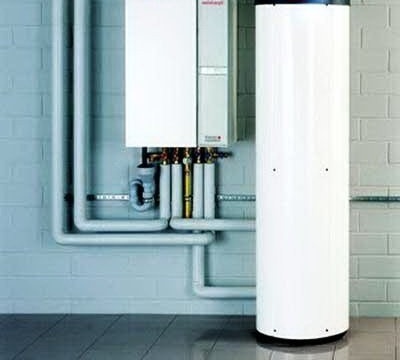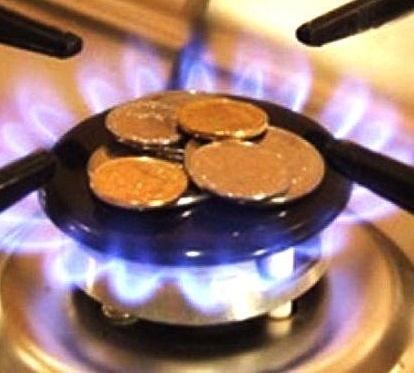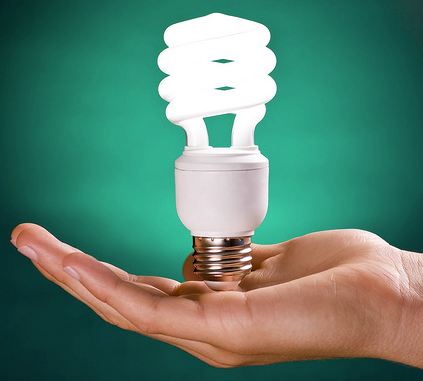Calculation of electricity consumption from an average electric boiler

The main unit of an independent heating system is considered to be a boiler unit - a heat generator. Depending on a number of factors, including such moments as the location of the house in relation to the nearest source of fuel, the dimensions of the building, the mode of living in it at different times of the year, the cost of installation, etc., the required equipment is selected.
But the key among these criteria is considered thermal engineering calculation. The choice of plant power and the type of fuel used depends on its results. To install electric heating boilers, energy consumption, in which everything is converted to heat (100% efficiency), is preferred by homeowners of living space up to 300 sq.m., who seek without any hassle to quickly and efficiently establish heating. Actually, it is acceptable to install a compact electric heating device in any place where there is a connection to a 220 V (380 V) network. It can function independently or become an additional source of heat in an already functioning heating system.
What affects the consumption of electrical energy?

A graphic example of the operation of an electric boiler: the dependence of electricity consumption on temperature outside the window
In order to correctly perform the necessary calculations and understand which electric boiler will be the most optimal solution in a particular case, the following indicators should be considered:
- type of equipment (single or dual circuit);
- volume of space intended for heating;
- unit power;
- cross-sectional area of the power cable;
- supply voltage; current value;
- heating area;
- tank capacity;
- amount of coolant in the heating circuit;
- the actual operating time of the installation in the heating season;
- cost of 1 kW / hour;
- the average daily value of the duration of the maximum operation, etc.
Table of guide values for cable cross-section
| power, kWt | Cable section for single-phase boilers, mm.kv. | Cable section for three-phase boilers, mm.kv. |
|---|---|---|
| 4 | 4 | — |
| 6 | 6 | — |
| 10 | 10 | — |
| 12 | 16 | 2,5 |
| 16 | — | 4 |
| 22 | — | 6 |
| 27 | — | 10 |
| 30 | — | 16 |
Attention! Although special requirements are not imposed on conventional boilers, however, the intention to use a unit with a capacity of more than 10 kW needs to be agreed with the electric distribution authorities and the Energy Supervision Authority. The reason is the need to connect a powerful 3-phase line. And you also need to get the "go-ahead" to use the household tariff for payment.
In addition, you should know that for average calculations, averaged values are taken, therefore, it is necessary to introduce an adjustment for the temperature indicators of the air, the thickness and material of the walls, the type of thermal insulation, etc.
At the cost of purchasing a boiler unit, its installation and maintenance, the electric model is considered the most economical, profitable, comfortable.It is also important that for the production of environmentally friendly energy, there is no need to provide a separate room for the boiler, as well as the costs of constructing a chimney.
The easiest calculation of planned costs
Theoretical background
Electricity, one of a kind, is able to give 100% efficiency when switching to a thermal component. This indicator remains stable throughout the entire life of the equipment.
To find out how much electricity an electric boiler consumes is not difficult, if you are guided by generally accepted data:
-
- In order to heat a unit volume of a building with a heat generator, it will take, on average, 4-8 W / h of electrical energy consumption. The specific figure depends on the result of calculations of heat losses of the entire structure and their specific value for the heating season. They are performed using a coefficient that takes into account additional losses through parts of the walls of the house, through pipelines passing in unheated rooms.
- In the calculations, the duration of the heating season is 7 months.
- Determining the average power indicator, they are guided by the rule: to heat 10 sq. M. areas with well insulated structures, up to 3 meters in height, 1 kW is enough. Then, for example, to warm the house 180 sq. M. enough boiler power 18 kW It should be remembered that the lack of "capacity" will not allow you to achieve the required microclimate parameters, and their excess will lead to unnecessary waste of energy.
- The calculation of the monthly heat value of an average building will be the product of the boiler capacity by the number of hours of its operation per day (during continuous operation).
- The obtained value is divided in half, taking into account that at constant maximum load the boiler will not work for 7 months: the thaw period is excluded, heating decreases at night, etc. The result obtained is considered an average indicator of energy consumption for a month.
- Multiplying it by the time of the heating season (7 months), we get the total energy consumption for the heating year.
Based on the cost of one unit of power, the total needs for heating the house are calculated.

A graphic example of the operation of an electric boiler: the dependence of electricity consumption on temperature outside the window
Using the power formula
In a simplified version, the heat engineering power calculation can be performed according to the formula:
W = S x W beats / 10 sq. M.
From the equation it is seen that the desired value is the product of the specific power per 10 m, sq. and the area of the heated room.
Note: the average rate of 3 kW of electricity per consumer is insufficient for the operation of the electric heating unit.
How to reduce power consumption at the calculation stage?
- Electric heating is the most economical, despite the high cost of a carrier unit. Adjustment of the work to change the outdoor temperature avoids temperature surges in different purpose rooms and saves electricity consumption.
- The calculation of consumption and cost is affected by the type of metering, as well as the use of the combined heating method. It is well known that the distribution of loads between electricity consumers during the day is uneven. Therefore, to maintain the required temperature parameters, it is advisable for the boiler to work at night (23:00 - 06:00), when there is minimal energy consumption at lower prices.
- Multi-tariff accounting allows you to save about a third of cash costs.
For information: peak load values occur at the time 08: 00-11: 00, 20:00 - 22:00.
- It is possible to achieve maximum efficiency in the system by using circulating discharge equipment. The pump is installed in the return network, minimizing the period of contact between the walls of the boiler and the hot coolant.This ensures a longer operation of the source of heat generated.
- If additional heat generating devices for other types of fuel are added to the working boiler, this will not only significantly save the cost of electric energy, but also reduce the consumption of gas, coal, fuel oil, and other heating units.



1 comment